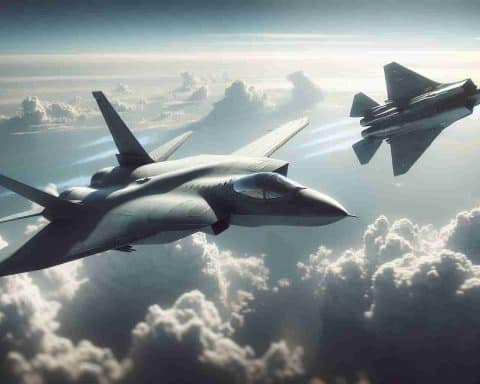U.S. Military’s F-35 Fighters Struggle with Readiness
The F-35 Lightning II, a critical asset for the U.S. military’s air dominance, is currently facing serious operational challenges. Despite the U.S. operating around 630 F-35s, a new Government Accountability Office (GAO) report highlights a worrying trend: for six consecutive years, the Air Force, Navy, and Marine Corps have missed their mission-capable (MC) rate goals for the aircraft.
In 2023, the Air Force reported an MC rate of only 52% for its F-35A fleet, significantly short of its 75–80% target. This persistent issue remains unresolved, even after $12 billion has been spent on maintaining and sustaining these cutting-edge jets.
The F-35 program is crucial as it forms a major part of the U.S.’s defense strategy against potential threats from adversaries like China and Russia, providing advanced capabilities for modern warfare. The aircraft’s importance is underscored by global orders from 19 countries, totaling over 3,500 units, with the U.S. being the largest customer. The U.S. plans to acquire 2,456 F-35s in various configurations, prominently featuring the Navy-exclusive F-35C designed for aircraft carrier operations.
Despite the overall defense challenge of maintaining readiness across all aircraft types, the modernity of the F-35 highlights the extreme urgency for improvement. The current maintenance issues and shortage of spare parts must be swiftly addressed to ensure these aircraft are battle-ready, allowing them to effectively counteract potential threats and fulfill their critical role within the military’s strategic framework.
Are Advanced Fighter Jets Really the Future of Defense? Unveiling the Truth Behind the F-35 Program
As the U.S. military grapples with the readiness issues of its F-35 Lightning II fighters, one might question whether investing in sophisticated aircraft technology is genuinely the pinnacle of modern defense strategies. Beyond the challenges outlined in the GAO report, this situation invites a broader discussion on the essential balance between cutting-edge advancement and pragmatic functionality.
Why Doesn’t the F-35 Perform as Expected?
Despite being one of the most advanced fighter jets globally, the F-35 faces frequently debated operational setbacks. These include software glitches, complex maintenance logistics, and a shortage of spare parts. Could these challenges be indicative of a larger issue within the military procurement process? Perhaps the ambition to incorporate groundbreaking features, such as stealth technology and advanced electronics, in a single aircraft has underscored the significance of balancing innovation with reliability.
Advantages and Disadvantages: A Closer Look
The F-35 is often celebrated for its state-of-the-art technology, including its stealth capabilities, integrated sensors, and precision weaponry. Such features theoretically equip it to handle a wide range of mission profiles, offering a tactical edge. However, the downside lies in the aircraft’s complex systems, which lead to extensive maintenance demands and elevated costs. The high price tag associated with these planes, along with persistent readiness issues, raises a question: are we sacrificing too much for innovation?
How Does This Impact Human Development and New Technologies?
These issues press us to rethink the intersection of technology and defense. The persistent readiness struggles of the F-35 program emphasize the necessity for enhanced systems integration and reliability in future military technologies. It signals a broader trend where the rapid development of advanced technologies must be met with robust testing and maintenance protocols to ensure their real-world scalability and utility.
In light of the F-35’s struggles, new opportunities may arise for technological innovation and collaboration across industries. Increased investment in research and development might foster advancements in artificial intelligence, predictive maintenance, and new materials, which could revolutionize how we approach future aircraft designs.
Controversies and Interesting Facts
One of the notable controversies surrounding the F-35 program is its immense cost. With lifetime expenditures potentially soaring to over $1.7 trillion, debates continue about whether these funds might be more effectively allocated towards other defense priorities or technological innovations.
A fascinating aspect of the F-35 is its potential for international collaboration. As a truly multinational program, it has united various countries in collective development and operational strategies. This aspect illustrates the increasing globalization of defense technology and highlights the program’s potential to enhance geopolitical alliances.
Related Links
For further insights into technological advancements and global defense, consider visiting Lockheed Martin and Government Accountability Office websites, which offer comprehensive details about ongoing defense projects and evaluations.
In conclusion, the F-35’s challenges encourage us to ponder how we can better merge state-of-the-art technology with operational viability. As we navigate an evolving global security landscape, lessons learned from the F-35 endeavor will be crucial in shaping the next era of military innovation and international collaboration.






















